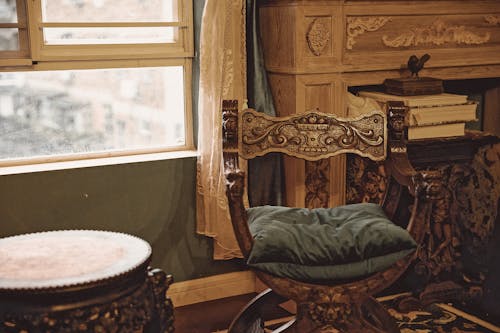Moving antique and fragile furniture requires extra care and attention to ensure that these valuable pieces remain intact and undamaged. Unlike regular furniture, antique items often have sentimental and monetary value, making it essential to handle them with the right techniques. Whether you’re relocating to a new home or transporting a treasured heirloom, this step-by-step guide will help you move your antique and fragile furniture safely.
Step 1: Assess the Condition of Your Furniture
Before you begin packing, thoroughly assess the condition of each antique piece. Take note of any existing damage, weak joints, or fragile components. Here’s what you should do:
- Inspect furniture for loose parts, cracks, or signs of wear.
- Take clear photographs of each item for reference and insurance purposes.
- Identify any pieces that require special handling, such as glass panels or delicate carvings.
Step 2: Gather the Right Packing Materials
To ensure maximum protection, you’ll need high-quality packing supplies. Here are some essential materials:
- Moving Blankets – To cushion and protect furniture from scratches and impacts.
- Bubble Wrap – Ideal for wrapping delicate surfaces and glass components.
- Furniture Covers – Helps protect against dust, dirt, and moisture.
- Corrugated Cardboard Sheets – Provides additional padding between stacked items.
- Packing Tape – Secures wrapping materials and prevents shifting.
- Foam Padding – Absorbs shocks and protects fragile corners.
- Custom Crates – Useful for extremely delicate or high-value pieces.
Step 3: Clean and Prepare Furniture for Packing
Cleaning your furniture before packing helps remove dust and debris that could cause scratches during transportation.
- Use a soft cloth to clean wooden surfaces and delicate carvings.
- For upholstered pieces, vacuum gently to remove dust and dirt.
- Avoid using harsh chemicals that could damage antique finishes.
If possible, disassemble large furniture pieces to make them easier to transport. Remove drawers, detachable legs, and glass panels. Keep small components, such as screws and bolts, in labeled ziplock bags and tape them to the corresponding item.
Step 4: Wrap and Protect Your Furniture
Proper wrapping is essential to safeguard antique furniture during the move. Follow these steps:
Protecting Wooden and Delicate Surfaces
- Wrap wooden surfaces in moving blankets and secure them with packing tape.
- Use bubble wrap to cover delicate carvings and protruding parts.
- Place foam padding on sharp corners to prevent chipping.
Packing Glass and Mirrors
- Use corrugated cardboard sheets to cover both sides of the glass.
- Wrap the entire piece with bubble wrap and secure it with tape.
- Mark glass items as “Fragile” and keep them upright during transit.
Upholstered and Fabric Items
- Cover antique chairs and sofas with furniture covers to prevent stains and dust accumulation.
- Avoid using plastic wrap directly on delicate fabrics, as it can trap moisture and cause damage.
Step 5: Choose the Right Moving Vehicle and Equipment
Antique and fragile furniture requires a well-equipped moving truck and proper lifting equipment. Here’s what to consider:
- Use a Climate-Controlled Truck – Protects antique furniture from extreme temperature changes.
- Furniture Dollies and Sliders – Reduce the risk of dropping or dragging heavy pieces.
- Tie-Down Straps and Ropes – Secure furniture to prevent shifting during transit.
- Padding and Cushions – Place soft padding on the truck’s floor and walls for added protection.
Step 6: Load and Transport Furniture Carefully
Loading your antique furniture properly ensures that it remains stable throughout the journey. Follow these best practices:
- Load Heavy Items First – Position larger furniture pieces at the back of the truck to create a stable base.
- Keep Glass Items Upright – Place glass panels and mirrors in a vertical position to prevent breakage.
- Use Ropes and Straps – Secure each item to prevent movement.
- Avoid Stacking Heavy Items on Fragile Pieces – Use cardboard sheets to separate stacked furniture.
Step 7: Unloading and Unpacking with Care
Once you reach your destination, it’s important to unload and unpack furniture carefully:
- Use Lifting Equipment – Carry heavy antique furniture with dollies to prevent strain and accidental drops.
- Place Items in Their Designated Rooms – This reduces unnecessary handling and movement.
- Slowly Remove Wrapping Materials – Avoid using sharp objects to cut through packing tape near delicate surfaces.
- Reassemble Any Disassembled Parts – Use your labeled ziplock bags to find screws and bolts for reassembly.
Bonus Tips for Moving Antique Furniture Safely
- Consult Professional Movers – If you’re unsure about handling high-value antiques, hire experienced movers.
- Label Fragile Items Clearly – Mark boxes and furniture pieces as “Fragile” to ensure careful handling.
- Purchase Moving Insurance – Protects against potential damage during transit.
- Store Furniture in a Climate-Controlled Space – If you need to store antique furniture, choose a facility with controlled temperature and humidity.
Conclusion
Moving antique and fragile furniture requires careful planning and execution to ensure that your treasured pieces remain intact. By using the right packing materials, following proper handling techniques, and securing items during transit, you can protect your furniture from damage. Whether you’re moving a single heirloom or an entire antique collection, these steps will help you transport your valuable furniture safely and efficiently.


